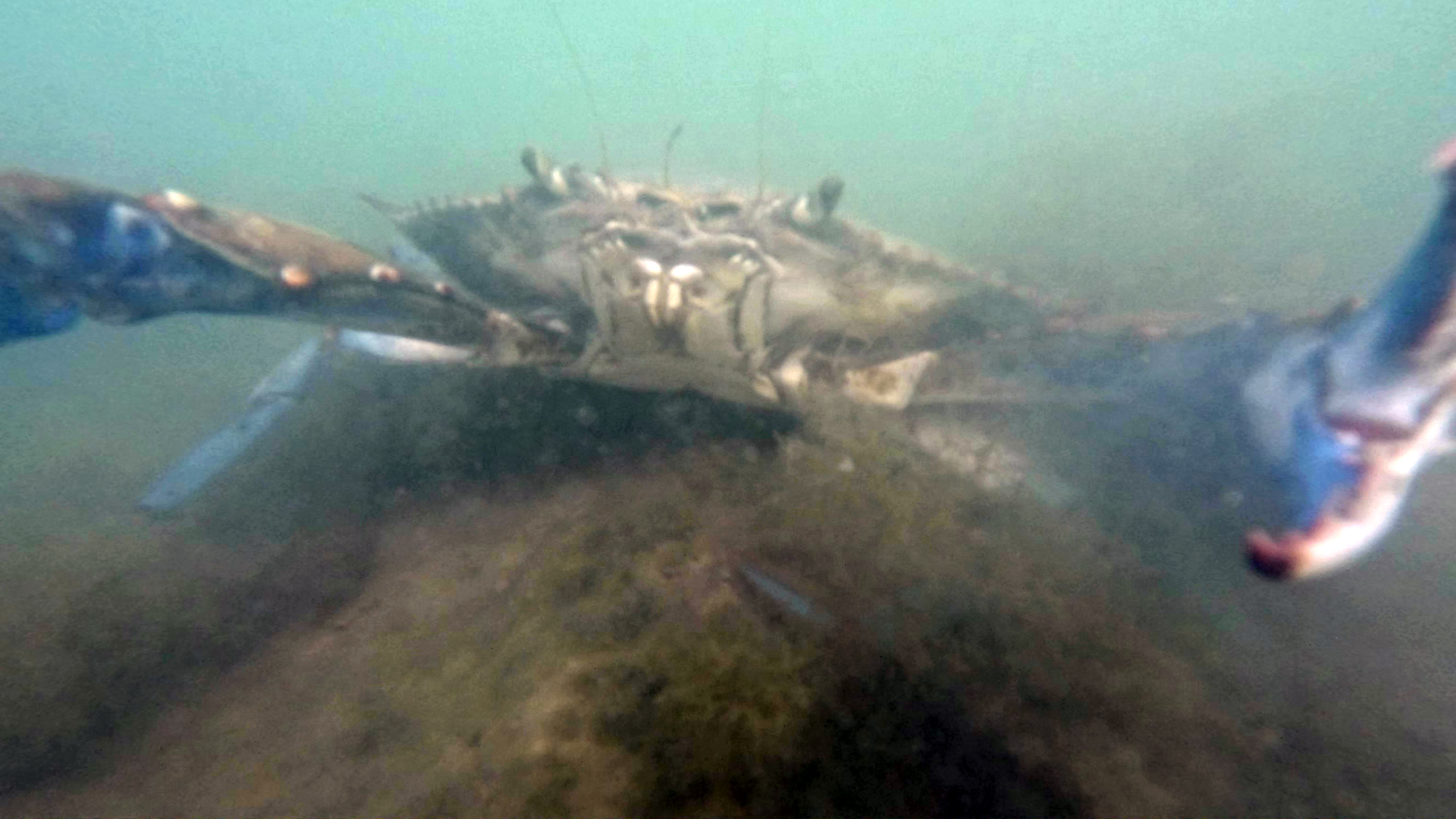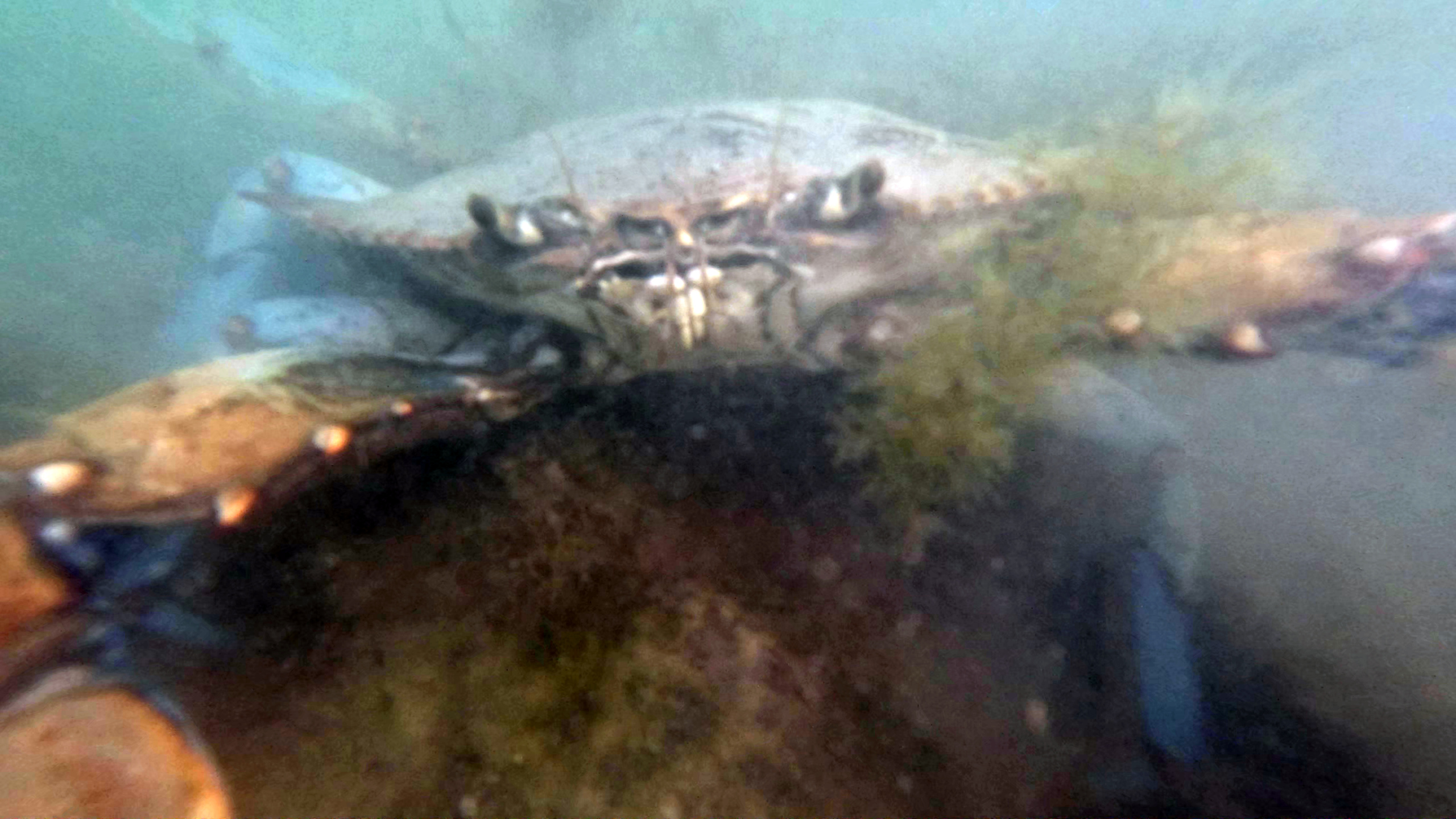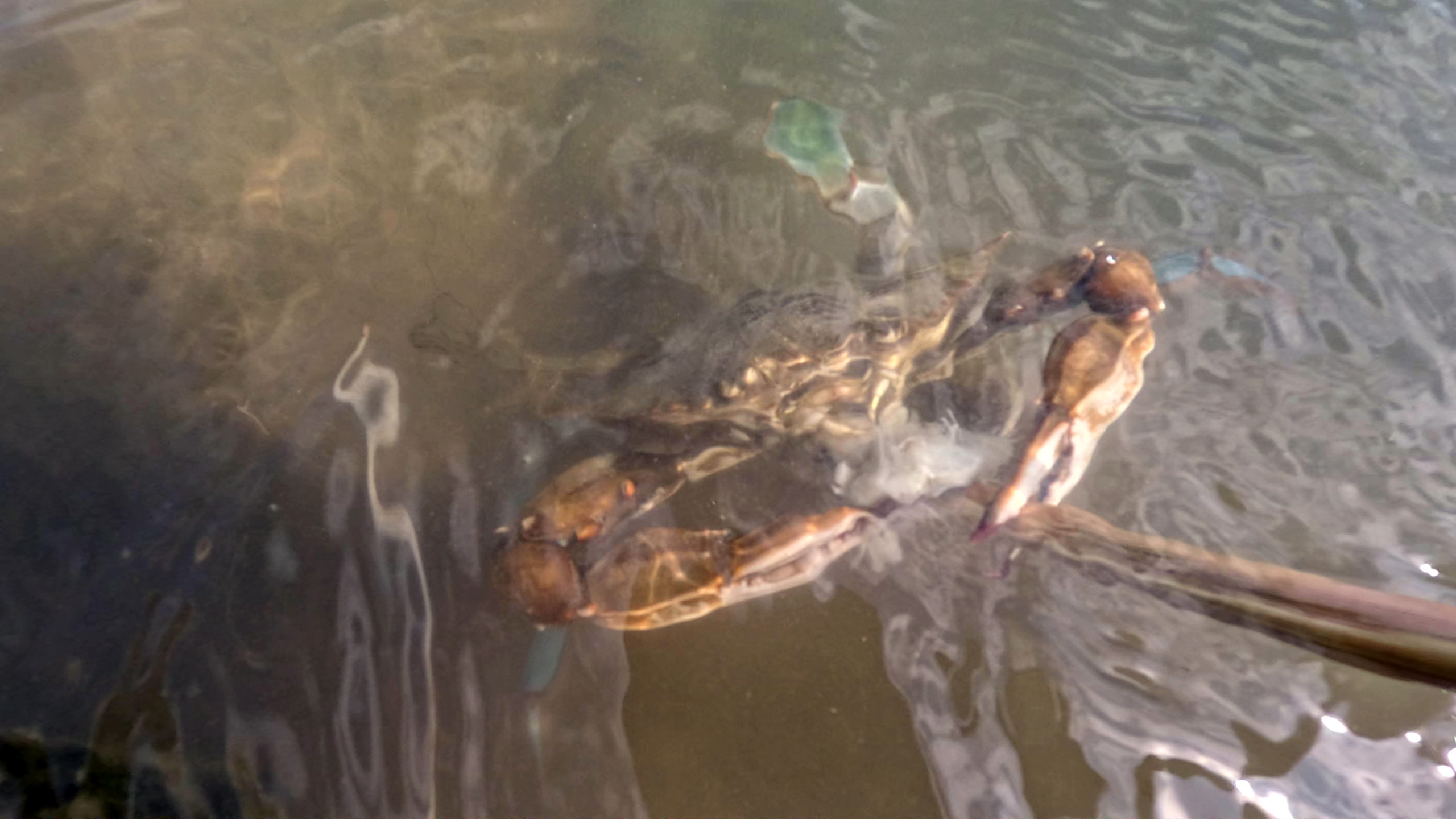Blue king crab or blue crab - Callinectes sapidus
This alien species has colonized the Mediterranean for at least fifty years but has spread by invading the coasts in recent years perhaps precisely because of the now inevitable warming of the waters of the Mediterranean Sea.

Blue king crab or blue crab (Callinectes sapidus Rathbun, 1896) is a decapod crustacean of the Portunidae family. Native species of the Atlantic coasts of the American continent, in recent years it is spreading also in the European continent.

Distribution
The species is native to the western shore of the Atlantic Ocean, where it lives along the coasts of the entire American continent, from Nova Scotia to Argentina, also extending along the river courses, as it is capable of tolerating salinity values lower than three per thousand . Through the water confiscated to ballast ships, the species has been accidentally introduced in many other parts of the world (North Sea, Baltic Sea, Black Sea, Mediterranean, Yellow Sea).

Description
The species measures up to 15 cm in length and 23 cm in breadth: it has a body that is wider than long, elliptical in shape, with two spikes on either side of the body and a serrated anterior margin. The legs are rather elongated, with the first pair transformed into claws, larger in the males than in the females: the color of the body is olive green above, while the belly is white-blue and the legs have the junction and the terminal part of a intense blue color.
During the moulting period, pink specks appear on the last pair of legs, flattened and adapted to swimming, which gradually acquire color becoming more and more red as the moult approaches.
Biology
These are omnivorous and rather aggressive animals: they feed on everything they can catch: bivalves, annelids, fry, carrion and plants.

Expansion of the area in the Mediterranean
In July 2008 it was reported in Italy, in Basilicata, at the mouth of rivers along the Ionian coast, on the Adriatic coast of Abruzzo and Puglia, and in the upper Adriatic from Goro to the Ferrara beaches.
In August 2019 some specimens were fished along the Cilento coast, in Ascea Marina di Velia (SA), and in Sottomarina di Chioggia (VE), they were also sighted in Roca Vecchia Marina di Melendugno (LE), Lesina and Peschici (FG). The species is rapidly spreading in the Valli di Comacchio and in the Ravenna area, where the calm and shallow waters have proved to be an ideal habitat for reproduction and growth. In September 2019, other specimens were sighted on the beach of Marina di Pisciotta (SA). Since November 2019 the specimens caught in this area have increased significantly.

In 2020 they were also spotted near the Gulf of Manfredonia, in Vieste. In Vasto and San Salvo in Abruzzo, in the seas of Sardinia, mainly in the lagoons of the province of Oristano (Marceddì), some specimens have been caught. Since 2020 it has also been present in Marsala within the Stagnone lagoon reserve where it is particularly prolific. Between November 2021 and February 2022 other specimens were caught by local fishermen in the Gulf of La Spezia precisely on the Lericina coast in front of San Terenzo.
https://it.wikipedia.org/wiki/Callinectes_sapidus

In August 2022 it was reported on the coasts of Lazio. In 2023 we can now say with certainty that it colonized the coasts of Tuscany in the province of Livorno.
It lives up to 35 meters deep, in waters with a very variable salinity, from 2 to 48 g‰, it resists without difficulty between 3 and 35 degrees, for this reason it is compatible with all environments, coasts, lagoons, estuaries. It is therefore spreading very quickly being a highly competitive species that can cause damage to ecosystems, in particular, it can become a competitor for the invertebrates with which it shares the habitat thanks to its strong aggressiveness and its great swimming capacity.
Furthermore, it has a high fecundity and a long reproductive period; this means that the blue crab, in the presence of optimal environmental conditions for it, manages to have enormous reproductive success with a large number of specimens that lead us to events such as the last one recorded at the Orbetello Lagoon.

Among the negative effects, the impact on the algal species on which it can feed and also on fishing and production activities in general should also be highlighted. Above all with regard to fishing, there is damage to gear, such as nets and pots, and also to the catch remaining in the gear itself. For farms, on the other hand, their voracity leads to a reduction in the availability of the “raw materials” necessary for the development of fish species and to a reduction in juveniles.
https://www.arpat.toscana.it/notizie/2023/granchio-blu/il-granchio-blu-danno-o-risorsa
Gallery
Video Gallery
